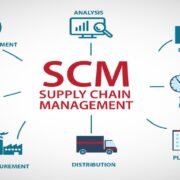Step-by-Step Guide to Writing an MBA Dissertation Proposal
Step-by-Step Guide to Writing an MBA Dissertation Proposal
Introduction
Step-by-Step Guide to Writing an MBA Dissertation Proposal. Step-by-Step Guide to Writing an MBA Dissertation Proposal. Writing an MBA dissertation proposal is a crucial step in your academic journey. A well-structured proposal lays the foundation for a successful dissertation by defining the research scope, methodology, and significance of the study. This guide provides a step-by-step approach to crafting a high-quality proposal that meets academic standards and enhances your chances of approval.
Understanding the Purpose of an MBA Dissertation Proposal
An MBA dissertation proposal serves multiple functions:
- It defines the research problem and its significance.
- It outlines the research objectives and questions.
- It details the methodology and research design.
- It provides a literature review to establish context.
- It sets a timeline for completing the dissertation.
A strong proposal demonstrates clarity, feasibility, and originality in research, ensuring your dissertation progresses smoothly.
Step 1: Selecting a Research Topic
Choosing a relevant and impactful research topic is the first step. Consider the following when selecting your topic:
- Relevance to your field: Ensure the topic aligns with your MBA specialization.
- Existing literature: Choose a topic that has sufficient research but still allows for new insights.
- Practical implications: Consider how your research could benefit businesses or industries.
- Personal interest: A topic you are passionate about will keep you motivated.
Step 2: Crafting a Strong Research Problem and Objectives
A well-defined research problem sets the direction of your study. Your research problem should:
- Address a gap in existing knowledge.
- Be specific and clear.
- Have practical and theoretical significance.
Next, define research objectives and questions that guide your study. Use SMART (Specific, Measurable, Achievable, Relevant, Time-bound) criteria to formulate them.
Example of a Research Problem and Objectives
Research Problem: How does digital marketing impact consumer purchasing behavior in the retail sector?
Objectives:
- To analyze key digital marketing strategies and their effectiveness.
- To examine consumer responses to different digital marketing channels.
- To assess the impact of digital marketing on brand loyalty and sales.
Step 3: Conducting a Comprehensive Literature Review
A literature review provides the theoretical foundation for your research. It involves:
- Identifying key theories and concepts related to your study.
- Analyzing previous research to find gaps and trends.
- Highlighting conflicting findings and potential research opportunities.
Use credible sources such as peer-reviewed journals, books, and industry reports. Organize the review thematically or chronologically to maintain coherence.
Step 4: Choosing the Research Methodology
Your methodology must be appropriate for your research objectives. The two main types are:
Quantitative Research
- Uses numerical data and statistical analysis.
- Suitable for hypothesis testing and measurable outcomes.
- Examples: Surveys, experiments, regression analysis.
Qualitative Research
- Focuses on exploratory insights and subjective experiences.
- Uses interviews, case studies, thematic analysis.
Mixed-Methods Approach
- Combines both quantitative and qualitative methods for a comprehensive analysis.
Ensure you specify:
- Sampling techniques (random, stratified, purposive sampling).
- Data collection methods (surveys, interviews, secondary data).
- Data analysis techniques (SPSS, thematic analysis, content analysis).
Step 5: Outlining the Research Timeline
A well-structured timeline helps keep the dissertation on track. A typical breakdown includes:
| Phase | Tasks | Duration |
| Proposal Writing | Topic selection, literature review, methodology | 1-2 months |
| Data Collection | Surveys, interviews, experiments | 2-3 months |
| Data Analysis | Statistical tests, thematic coding | 1-2 months |
| Writing & Review | Drafting, editing, supervisor feedback | 2-3 months |
| Final Submission | Formatting, final approval | 1 month |
Use project management tools like Gantt charts to visualize deadlines.
Step 6: Writing the Proposal Document
1. Title Page
- Include your name, university, dissertation title, and date.
2. Introduction
- Background of the research problem.
- Research gap and significance.
- Objectives and research questions.
3. Literature Review
- Summary of existing research.
- Key theories and frameworks.
- Identified research gaps.
4. Research Methodology
- Type of research (quantitative/qualitative/mixed-methods).
- Data collection and analysis methods.
- Ethical considerations.
5. Expected Outcomes
- Predicted findings based on literature.
- Contribution to academic and practical knowledge.
6. Research Timeline
- Clear project milestones and deadlines.
7. References
- List of cited academic sources in APA, MLA, or Harvard style.
Step 7: Reviewing and Refining the Proposal
Before submission:
- Proofread for clarity and coherence.
- Seek feedback from supervisors and peers.
- Ensure alignment with university guidelines.
Conclusion
A well-prepared MBA dissertation proposal is essential for a successful research journey. By following these structured steps—choosing a strong topic, conducting a thorough literature review, selecting the right methodology, and crafting a detailed research plan—you can create a proposal that stands out. Diligence and attention to detail will help secure approval and set the stage for a compelling dissertation.
Thank you for read our blog “Step-by-Step Guide to Writing an MBA Dissertation Proposal”. I hope this blog is helpful to you, if you have any question feel free Call / WhatsApp: +91.9830529298 || Email: dissertationshelp4u@gmail.com.
Also read our more BLOG here.















Leave a Reply
Want to join the discussion?Feel free to contribute!